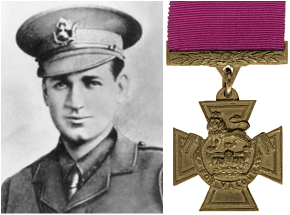VOI CEMETERY
Kenya
Location Information
Voi is a small town approximately 160 kilometres from Mombasa and is just north of the main highway between Nairobi and Mombasa.
Voi is reached by turning off the main highway and following the minor road to Voi centre. The cemetery is approximately 400 metres east of the railway station and there is a Commission sign opposite the entrance. The cemetery is surrounded by a green metal pale fence and is set back a small distance from the road.
Visiting Information
Voi Cemetery is open Monday to Friday between 06:00 and 18:00. Outside of these hours the cemetery is locked with a coded padlock. If you are intending to visit this site outside of the opening hours the code to the padlock can be obtained from our office in Kenya on 00 254 20260 4301. The opening hours of this office are Monday-Friday 08:30-12:30, 13:30-16:30 (closed weekends).
Wheelchair access to this cemetery is possible via main entrance.
Historical Information
Voi became a hospital centre early in 1916. In the period August 1915 to December 1917, 100 burials were made in the cemetery and after the Armistice, a further 37 graves were brought in from Bura Military Cemetery (14 graves of the 2nd Loyal North Lancs, 29 September 1915), Maktau Military Cemetery (17 graves, largely 3 September 1915) and Tsavo Military Cemetery (six graves).
The origin of the cemetery can be traced back to the burial of a civilian engineer (Mr. O'Hara) in 1899, who was killed by one of the famous 'Man-eaters of Tsavo'. It now contains 137 Commonwealth burials of the First World War, one of which is unidentified. The Commission also has responsibility for six non-war burials in the cemetery.
Cemetery pictures used with the permission of the Commonwealth War Graves Commission
Voi is a small town approximately 160 kilometres from Mombasa and is just north of the main highway between Nairobi and Mombasa.
Voi is reached by turning off the main highway and following the minor road to Voi centre. The cemetery is approximately 400 metres east of the railway station and there is a Commission sign opposite the entrance. The cemetery is surrounded by a green metal pale fence and is set back a small distance from the road.
Visiting Information
Voi Cemetery is open Monday to Friday between 06:00 and 18:00. Outside of these hours the cemetery is locked with a coded padlock. If you are intending to visit this site outside of the opening hours the code to the padlock can be obtained from our office in Kenya on 00 254 20260 4301. The opening hours of this office are Monday-Friday 08:30-12:30, 13:30-16:30 (closed weekends).
Wheelchair access to this cemetery is possible via main entrance.
Historical Information
Voi became a hospital centre early in 1916. In the period August 1915 to December 1917, 100 burials were made in the cemetery and after the Armistice, a further 37 graves were brought in from Bura Military Cemetery (14 graves of the 2nd Loyal North Lancs, 29 September 1915), Maktau Military Cemetery (17 graves, largely 3 September 1915) and Tsavo Military Cemetery (six graves).
The origin of the cemetery can be traced back to the burial of a civilian engineer (Mr. O'Hara) in 1899, who was killed by one of the famous 'Man-eaters of Tsavo'. It now contains 137 Commonwealth burials of the First World War, one of which is unidentified. The Commission also has responsibility for six non-war burials in the cemetery.
Cemetery pictures used with the permission of the Commonwealth War Graves Commission

Lieutenant Wilbur Taylor Dartnell, (Also known as William Thomas Dartnell), V. C.
25th Bn., Royal Fusiliers, died 3rd September 1915, aged 30. Plot V. B. 1.
Son of Henry and Rose Ann Dartnell; husband of Elizabeth Edith Dartnell (nee Smyth), of "Maktau," Phillips Avenue, Murrumbeena, Victoria, Australia. Born at Melbourne.
Citation: An extract from "The London Gazette," dated 23rd Dec., 1915, records the following.- "For most conspicuous bravery near Maktau (East Africa) on 3rd September, 1915. During a mounted infantry engagement the enemy got within a few yards of our men, and it was found impossible to get the more severely wounded away. Lieutenant Dartnell, who was himself being carried away wounded in the leg, seeing the situation, and knowing that the enemy''s black troops murdered the wounded, insisted on being left behind in the hopes of being able to save the lives of the other wounded men. He gave his own life in the gallant attempt to save others."
25th Bn., Royal Fusiliers, died 3rd September 1915, aged 30. Plot V. B. 1.
Son of Henry and Rose Ann Dartnell; husband of Elizabeth Edith Dartnell (nee Smyth), of "Maktau," Phillips Avenue, Murrumbeena, Victoria, Australia. Born at Melbourne.
Citation: An extract from "The London Gazette," dated 23rd Dec., 1915, records the following.- "For most conspicuous bravery near Maktau (East Africa) on 3rd September, 1915. During a mounted infantry engagement the enemy got within a few yards of our men, and it was found impossible to get the more severely wounded away. Lieutenant Dartnell, who was himself being carried away wounded in the leg, seeing the situation, and knowing that the enemy''s black troops murdered the wounded, insisted on being left behind in the hopes of being able to save the lives of the other wounded men. He gave his own life in the gallant attempt to save others."







